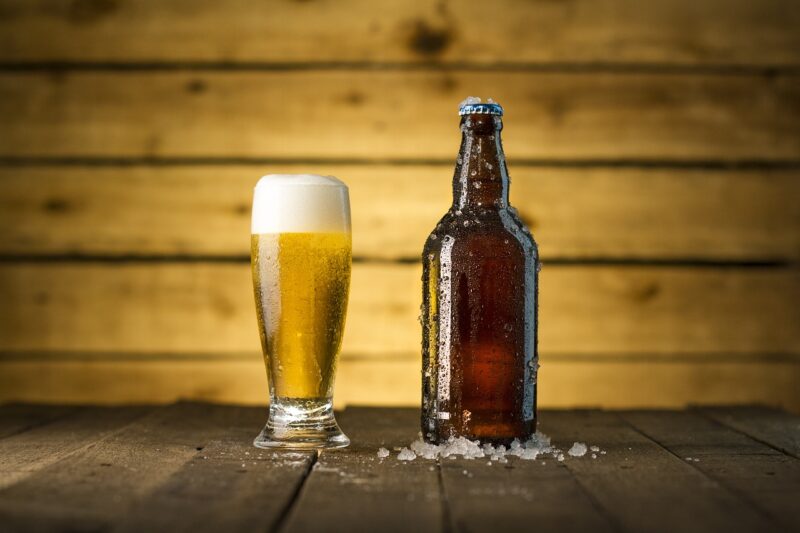Cheers to Innovation: The Craft Beverage Revolution and Its Global Impact
November 18, 2024

In recent years, the global beverage market has been experiencing a seismic shift towards craft beverages, which encompass a wide range of artisanal products such as craft beer, spirits, and non-alcoholic drinks. This burgeoning movement is altering consumer choices and production methods, resonating particularly well with the younger, more adventurous demographic. As more people embrace the idea of unique flavors and local sourcing, the craft beverage revolution is influencing not just what we drink, but also how we think about production, sustainability, and community.
1. Understanding the Craft Beverage Movement
Craft beverages are typically produced in small batches with a focus on quality, flavor, and traditional methods. This movement gained significant traction in the late 20th century, largely driven by a consumer desire for authenticity and unique experiences. Unlike mass-produced counterparts, craft beverages often reflect local cultures and individual creativity, allowing both producers and consumers to engage with the products on a deeper level.
**Key Characteristics of Craft Beverages:**
- Small-scale production: Craft producers tend to operate on a smaller scale compared to large corporations, allowing for greater attention to detail and creativity in their products.
- Quality over quantity: A commitment to high-quality ingredients and traditional techniques is at the heart of the craft beverage movement, setting them apart from mass-market drinks.
- Local sourcing: Many craft producers prioritize locally sourced ingredients, helping to support regional agriculture and contribute to sustainable practices.
- Innovation and experimentation: Craft beverage makers are often willing to push the boundaries of flavor and style, leading to a diverse array of offerings that continually evolve to meet consumer preferences.
2. The Craft Beer Boom
The craft beer sector is arguably the most recognized segment of the craft beverage revolution. Since the 1980s, craft breweries have exploded in number, with the Brewers Association reporting over 8,000 craft breweries in the U.S. alone as of 2023. This has transformed the beer landscape, pushing consumers away from generic tastes towards an appreciation for hops, malts, and varying brewing techniques.
– **Innovative Flavors:** Craft breweries have pioneered unique flavor combinations that signal a departure from traditional beer styles. From fruit-infused ales to barrel-aged stouts, the experimentation leads to a never-ending variety of tastes to explore.
– **Cultural Reflection:** Many craft beers pay homage to local customs, traditions, and regional ingredients, allowing consumers to partake in a beverage that tells a story about its origins.
– **Local Economy Support:** Craft breweries not only create jobs but also stimulate local economies by sourcing from local farmers and collaborating with other community businesses.
3. The Rise of Craft Spirits
While craft beer stole the spotlight initially, craft spirits have emerged as a significant player in the craft beverage movement. Distilleries have adopted practices similar to breweries by focusing on high-quality products made from locally sourced ingredients.
**Key Aspects of the Craft Spirits Movement:**
- Artisanal Approach: Many distillers handcraft their spirits, often using unique or locally sourced botanicals, grains, or fruits to distinguish their products from mass-produced alternatives.
- Transparency in Production: Consumers frequently desire to know where ingredients come from and how their beverages are made. Craft distilleries often highlight their stories and methods to engage with the market.
- Sustainable Practices: With a growing concern for the environment, many craft distillers are implementing sustainable practices, such as recycling distillation byproducts or using renewable energy sources, contributing to their appeal.
4. Non-Alcoholic Craft Beverages: A New Frontier
With the recent rise in health consciousness among consumers, non-alcoholic craft beverages are emerging as a viable segment that caters to those desiring unique flavors without alcohol. These include craft sodas, mocktails, and kombuchas that focus on quality and flavor.
– **Craft Sodas and Ales:** Many companies are creating innovative, artisanal sodas that promote natural ingredients and unique flavor profiles, appealing to a demographic that is increasingly health-conscious.
– **Kombucha and Fermented Drinks:** The popularity of fermented drinks like kombucha highlights the demand for probiotic-rich beverages that are both tasty and beneficial to health, representing another layer of the craft revolution.
– **Mocktails and Ready-to-Drink Options:** The rise of ready-to-drink (RTD) non-alcoholic cocktails offers consumers the opportunity to enjoy premium flavors without the alcohol, appealing to a broader audience.
5. The Global Impact of the Craft Beverage Revolution
The craft beverage revolution is not just a trend; it has lasting implications on global scales, affecting economies, consumer behavior, and cultural exchanges.
1. **Economic Growth:** The rise of craft beverages significantly contributes to job creation and local economies. As consumers increasingly prefer local and craft options, businesses thrive, resulting in better economic stability.
2. **Cultural Exchange:** The craft beverage movement fosters cultural sharing through beer, wine, and spirit festivals, encouraging collaboration and innovation across borders. This global exchange creates opportunities for local producers to expand their markets while introducing new flavors to consumers.
3. **Sustainability Efforts:** The focus on sourcing local ingredients and sustainable practices can lead to reduced carbon footprints and higher quality products, as producers often prioritize environmental responsibility in their operations.
Conclusion
The craft beverage revolution illustrates the power of innovation to inspire change in consumer behavior and production methods, creating a vibrant segment of the global market. As people become more discerning and seek richer, more authentic experiences of what they consume, the craft beverage movement offers a unique opportunity to celebrate local artisans, sustainability, and creativity.
Cheers to the innovation in beverages that tantalizes our taste buds and reinforces our connections with local communities. Whether indulging in a robust craft beer or enjoying a refreshing craft soda, each sip reflects the artistry and passion behind this exciting revolution.







